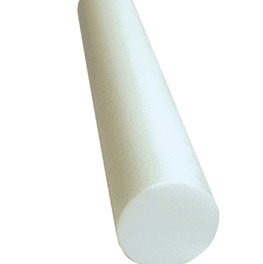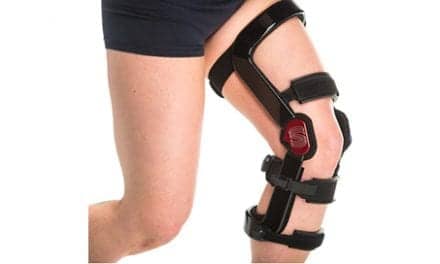Summary:
University of Delaware-led research, spearheaded by Thomas Kaminski, aims to validate and expand the “Get aHEAD Safely in Soccer” program, which strengthens neck and core muscles to enhance player safety while heading the ball, potentially influencing global soccer policies.
Key Takeaways:
- Program Validation and Expansion: The program, previously proven effective for female soccer players, is now being tested on male youth players, focusing on elite teams for higher heading frequency.
- Innovative Training Tools: Lightweight Heading Trainer soccer balls and specialized drills are used to safely improve neck and core strength, reducing impact forces during heading.
- Global Implications: Findings could inform U.S. Soccer policies and potentially influence international guidelines, addressing safety concerns for youth soccer players worldwide.
University of Delaware-led research on youth soccer fields could drive world soccer policy in the future.
Thomas Kaminski, professor of kinesiology and applied physiology at UD’s College of Health Sciences, is validating his Get aHEAD Safely in Soccer program developed for United Soccer Coaches.
The interactive certificate course is designed to help coaches better understand the techniques, drills, and preparations needed for enhanced player safety while heading the ball.
The program was previously validated in female soccer players, who saw significant neck and core strength improvements in research published in the Research in Sports Medicine journal.
Now, Kaminski is testing the program in male soccer youth soccer players this fall and in the spring.
Further Reading:
“We’re working with elite-level soccer teams because they will head the ball a bit more, especially in games, than players on a travel or recreational team would,” Kaminski says.
The study is funded through $40,000 from U.S. Soccer, which is interested in requiring the program for coaches nationwide.
“They want to see more evidence that the program works before they require it for coaches across the U.S.,” Kaminski says.
U.S. Soccer guidelines forbid heading at practices and games for players under 10. But between the ages of 11 and 13, heading the ball on a limited basis is permitted.
“Coaches are thirsty for the knowledge, expertise, and input on how to properly and safely teach heading to soccer players,” Kaminski says.
The training involves drills to strengthen the neck and core region of the body.
“Kids ages 11-13 aren’t typically working to strengthen their neck or core region, so that makes the training unique,” he says. “But that improved strength will lessen accelerations and decrease impact when they head the ball.”
Kaminski’s program also substitutes regulation soccer balls with the lightweight Heading Trainer soccer ball.
“These training balls look and feel like a normal soccer ball but are much lighter,” he says. “During specific drills, the players are more apt to head the ball because it doesn’t hurt.”
The lightweight ball also allows for some repetition.
“Evidence has shown very minimal force on the head, neck, and brain when the protocol is followed,” Kaminski says. “We expect to see neck strength and girth changes in these players.”
In addition, Kaminski and his team consistently monitor repetitive head impacts to gain valuable insight into the impact these forces have on the young, developing brain. Elite youth soccer players in Middletown, Wilmington, and Hockessin wear specialized mouthguards with sensors that track head impacts during practices and games.
“We have cameras set up at practice, so any hits we pick up on the mouthpiece sensors, we also have on tape,” Kaminski says.
The specialized mouthpieces are made through a collaboration with Wake Forest University School of Medicine in North Carolina. UD alumna Erin Macko, DDS, volunteered her expertise and experience to perform intraoral scans on soccer players participating in the study at her nearby dental practice, Erin N. Macko DDS Family Dental Care in Newark. These scans were used to fabricate the custom-fit mouthpieces.
“I’ve always felt a call to give back to the community,” Macko says. “This is one way I can contribute and help these soccer players and future student-athletes perform safely.”
Mouthguards aren’t required in soccer, leading to Macko treating her fair share of injuries.
“If this research leads to fewer concussions, broken teeth, and jaws, then I support it,” Macko says. “Medical professionals and athletes deal with much more after the initial trauma. The aftermath of these injuries can have a domino effect.”
Macko, who graduated in 2006, didn’t know Kaminski during her time at UD as an honors exercise physiology (now kinesiology) major and UD women’s volleyball team member. They first connected during the COVID-19 pandemic when she volunteered as a state vaccinator and organized and led vaccination clinics from her then-shuttered office.
“I was honored to vaccinate the athletic training and nursing students as well as other organizations in the Newark community and, of course, my patients,” Macko recalls. “When Tom approached me with this research, there was no hesitation. I was immediately on board.”
Kaminski, the sole U.S. representative on the FIFA Heading Expert Panel, says that the organization is also interested in the study’s findings.
“In the U.S. and England, there are guidelines for heading the ball, but the rest of the world has no guidelines for youth soccer players,” he says. “Research like this can drive policy worldwide.”
It’s believed that policy will make for better, stronger, and safer players.
“The athletes we’re working with aspire to play, certainly in high school, and possibly on the collegiate or national level,” Kaminski says. “Heading is a vitally important skill, and if players aren’t taught the proper technique early on, they will develop bad habits that will haunt them for the rest of their time on the field.”
Featured Image: A soccer player with Delaware Football Club wears a mouthpiece equipped with sensors to monitor neck strength and head impacts as part of a study led by Thomas Kaminski, professor of kinesiology and applied physiology. Photo: Evan Krape/University of Delaware





